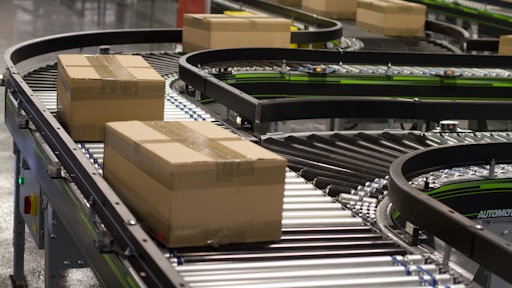
Rome wasn’t built in a day, as the saying goes. It was a centuries’ long process that involved a lot of heavy lifting, intricate carving, innovative design and incremental—but thoughtful—expansion. Over time it all came together to create an epic empire that appeared almost as if carved from a single gleaming block of marble.
Just like building one of history’s most revered cities, automating your warehouse doesn’t have to happen as an all-or-nothing proposition. It can be a process where each piece seamlessly builds on the others, improving the system with each step and bringing you closer to a warehouse that perfectly suits your organization’s unique needs.
There are a multitude of reasons why companies seek automated solutions for their warehouses or distribution centers (DCs). Automation solves a range of labor issues, dramatically increases order fulfillment speed and accuracy, reduces cost of goods sold and can help improve inventory density.
The key is to find the right level of automation for your company’s needs. Some companies don’t need or can’t yet afford a fully automated warehouse. Others will thrive as a result of automating every possible element.
By carefully assessing your company’s requirements, you can determine where your warehouse fits on the automation spectrum. The right match will improve efficiency, save money and lead to happier, healthier workers.
Assessing the solution
Companies that haven’t previously integrated any sort of automation into their warehouses hesitate for several reasons. Some don’t see the purpose if they feel that manual operations are working just fine as is. Others fear that an automated solution lacks flexibility for the ebb and flow of retail order demand. In many cases, companies simply can’t justify the expense of a fully-automated warehouse.
The most effective warehouses, however, recognize the advantages and integrate automation in the areas where it makes sense, creating an environment that is ultimately more streamlined, adaptable and cost-efficient. Sortation, automated storage and retrieval, goods-to-person and robotics are among the automated elements that can be incorporated into systems.
Starting with a thorough assessment of your operations will help you determine which areas could be more efficient and how automation can help accomplish your goals. Say your company has a half-million SKUs, but you don’t want to put all of them into automated processes. You can apply automation just to a subset based on velocity while still running the rest through the warehouse manually.
Targeted automation can also help your warehouse function with greater agility. Places in the warehouse with a high concentration of workers are a good place to start looking at automation because even a small degree can improve efficiency and accuracy. Rather than pulling in extra employees during peak seasons, you can up the system’s throughput without investing in additional training or worrying about a drop in accuracy. Automation also increases safety for employees by improving ergonomics and cutting down on repetitive motion that can lead to stress injuries.
On the other end of the spectrum, companies that are already well-versed in automation are increasingly adopting a goods-to-person approach. Letting machinery select items and bringing them to the worker eliminates a lot of movement and makes it very simple to pick the right product.
As companies improve accuracy and efficiency, naturally they start saving money in their warehouses, too. The cost of slowly or incorrectly picked orders adds up over time, so in this example, a directed picking or goods-to-person automated solution, even a partial one, can lead to great long-term savings.
How to take the leap
Often companies that take the leap, however slowly at first, eventually become advocates for automation once they see the degree to which it improves operations. One automated process becomes two, and so on until they fully embrace it.
A few years ago, a major retailer with a fully-manual warehouse decided to dip its toe into automation with an automated pick-and-put solution. Earlier this year, it deployed unit sortation, as well as some buffer and sequencing applications. The adoption of automation, even at a slower pace, has had a positive impact on the bottom line as the business grows.
Now, it’s a bit of a chicken and the egg scenario—business has been able to grow because automation makes order fulfillment more efficient. The growing business means that the retailer may need to invest in even more automation. Every six to eight months, after thoughtful and thorough evaluation, the company may add another automated element to its warehouse.
Once managers become comfortable with their initial automation investment, they frequently start thinking about what else they can do to make operations run better, harder and faster.
Just like the inventiveness that helped Rome rise from the earth, the pieces of your automation solution will come together to help you run a smarter, more innovative warehouse.






























